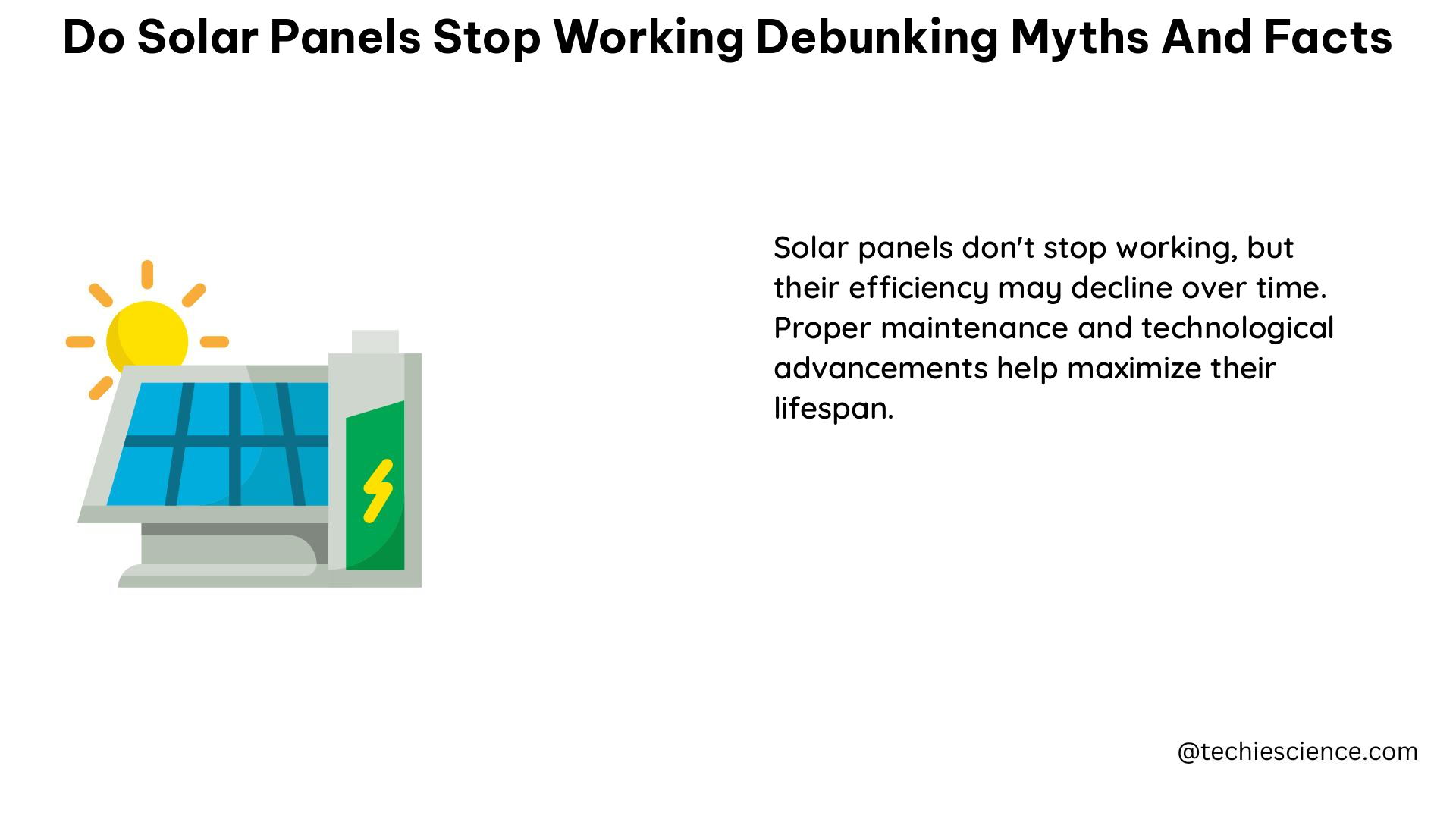Solar energy has become an increasingly popular choice for homeowners and businesses looking to reduce their carbon footprint and save on energy costs. However, there are still many myths and misconceptions surrounding the reliability and functionality of solar panels. In this comprehensive guide, we’ll debunk the most common myths and provide you with the facts and data points you need to understand the true capabilities of solar technology.
Myth 1: Solar Panels Lose Efficiency Over Time
Fact: While it’s true that solar panels do experience a gradual decline in efficiency over time, the rate of decline is much slower than many people believe. Typically, solar panels will lose around 0.5% to 1% of their efficiency per year, meaning they can still maintain 80-90% of their original efficiency after 20-25 years of use.
According to a study by the National Renewable Energy Laboratory (NREL), the median degradation rate for crystalline silicon solar panels is just 0.5% per year. This means that a solar panel with an initial efficiency of 22% would still be producing around 18% of its original output after 25 years of use.
Myth 2: Solar Panels Don’t Work in Cloudy or Cold Climates

Fact: Solar panels are designed to generate electricity from sunlight, not heat. This means that they can still produce power even on cloudy days and in colder temperatures. In fact, solar panels tend to perform better in cooler climates, as heat can actually reduce their efficiency.
According to a study by the University of New South Wales, solar panels can still generate up to 25% of their maximum output on heavily overcast days. Additionally, a study by the National Renewable Energy Laboratory found that solar panels can maintain up to 90% of their efficiency in temperatures as low as -10°C (14°F).
Myth 3: Solar Panels Require Frequent Maintenance
Fact: Solar panels are designed to be low-maintenance and require very little upkeep. In most cases, the only regular maintenance required is the occasional cleaning to remove dust, dirt, or debris that may accumulate on the panels.
According to a study by the National Renewable Energy Laboratory, the average annual maintenance cost for a residential solar system is just $21 per kilowatt of installed capacity. This includes the cost of cleaning, inspections, and any minor repairs that may be necessary.
Myth 4: Solar Panels Are Too Expensive
Fact: While the upfront cost of a solar system can be significant, the long-term savings and financial benefits often outweigh the initial investment. Additionally, there are numerous incentives and rebates available that can help offset the cost of solar installation.
According to the U.S. Department of Energy, the average cost of a residential solar system has dropped by more than 60% since 2010, from $6.65 per watt to $2.50 per watt in 2020. Furthermore, the federal solar tax credit, which provides a 26% credit on the cost of a solar system, can save homeowners thousands of dollars.
Myth 5: Solar Panels Damage Roofs
Fact: In many cases, solar panels can actually protect the roof from the elements and extend its lifespan. The panels act as a barrier, shielding the roof from direct sunlight, rain, and other weather conditions that can cause wear and tear.
According to a study by the National Renewable Energy Laboratory, the average lifespan of a roof can be extended by up to 25 years when solar panels are installed. However, it’s important to ensure that the roof is in good condition before installing solar panels to avoid any potential issues down the line.
Conclusion
By debunking these common myths and providing you with the facts and data points, we hope to have demonstrated the true capabilities and reliability of solar technology. Solar panels are a highly efficient, cost-effective, and low-maintenance source of renewable energy that can provide significant long-term benefits for homeowners and businesses alike.
References:
– Degradation Rates of Crystalline Silicon Photovoltaic Modules
– The Effect of Cloud Cover on Solar Photovoltaic Energy Production
– Performance of Photovoltaic Modules in Cold Climates
– Residential Solar Photovoltaic System Costs and Maintenance
– The Impact of Solar Panels on Roof Lifespan

The lambdageeks.com Core SME Team is a group of experienced subject matter experts from diverse scientific and technical fields including Physics, Chemistry, Technology,Electronics & Electrical Engineering, Automotive, Mechanical Engineering. Our team collaborates to create high-quality, well-researched articles on a wide range of science and technology topics for the lambdageeks.com website.
All Our Senior SME are having more than 7 Years of experience in the respective fields . They are either Working Industry Professionals or assocaited With different Universities. Refer Our Authors Page to get to know About our Core SMEs.